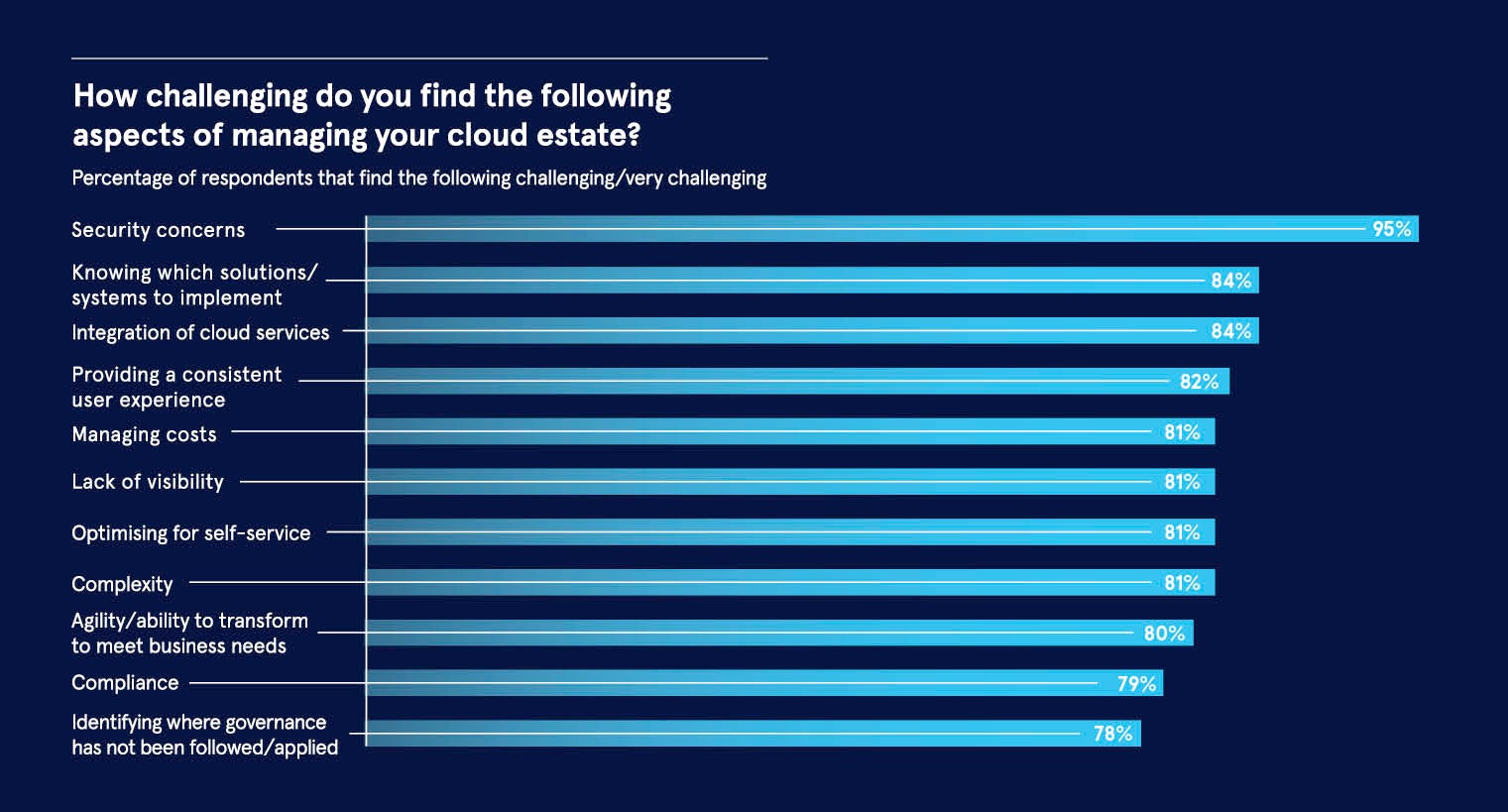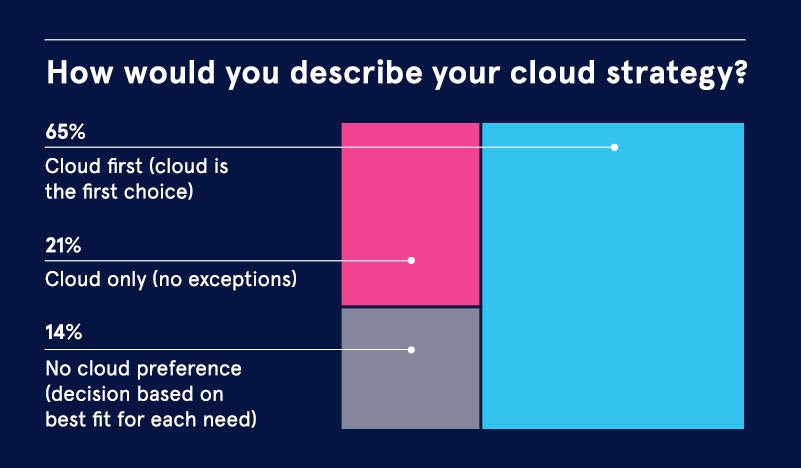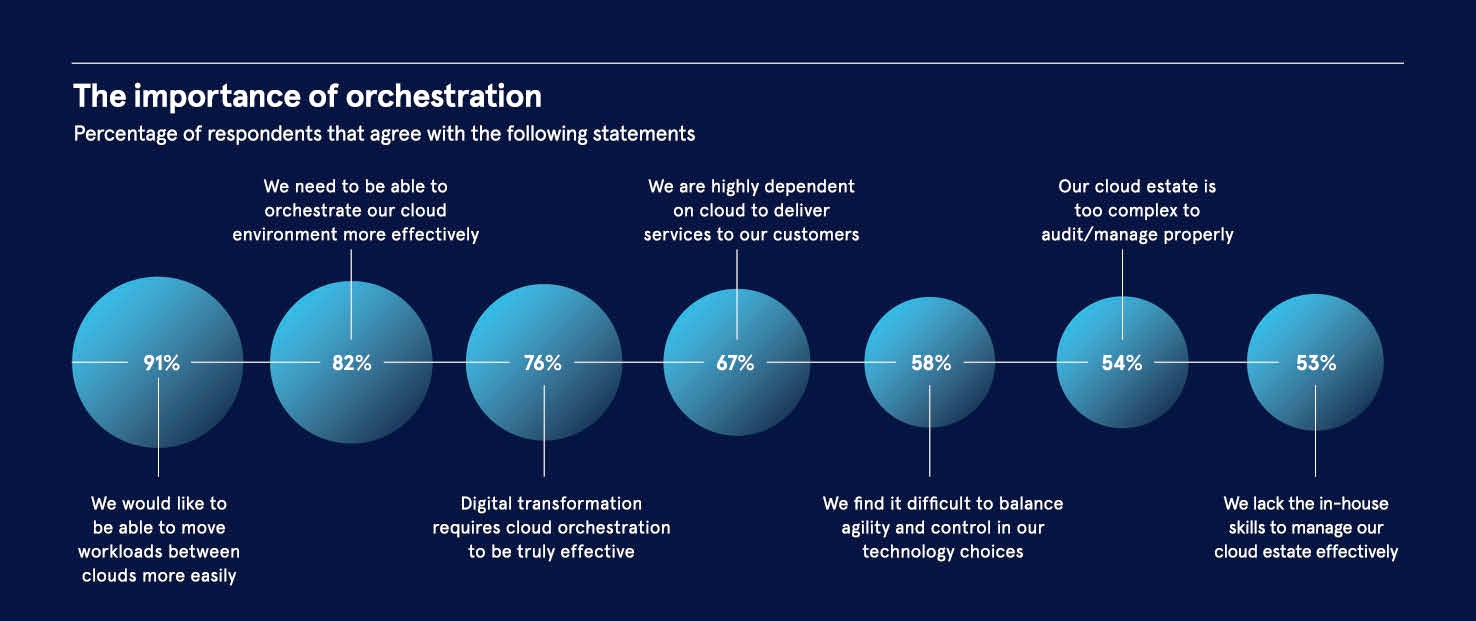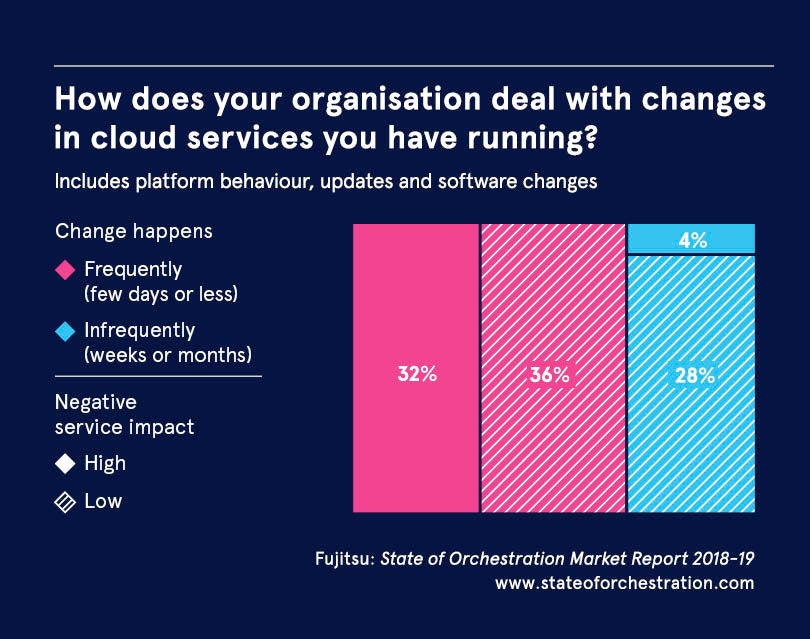Organisations are facing an unprecedented level of disruption to their core business models. The World Bank predicts that if digital technology continues to disrupt traditional industries at the current rate, 30 per cent of total global business revenue, more than $60 trillion, will be redistributed by 2025 to brand new players.
Despite the scale of this challenge and the hyper-intense competition it presents, there are huge opportunities within reach for those who refuse to stand still. Looking beyond “business as usual being a recipe for failure”, the most forward-thinking organisations are responding to and embracing disruption, not only to drive new revenue streams, but to surpass competitors, many of whom are playing by entirely new rules.

In light of this, businesses are searching for transformational ways to innovate and respond to change faster, and to deliver more seamless services that engage and delight customers. Cloud has emerged as the crucial tool for achieving these goals.
“The cloud has underpinned the strategies of most, perhaps all, of the most disruptive new entrants,” says Mark Phillips, head of hybrid IT, Europe, Middle East, India and Africa, at Fujitsu. “It is so much more adaptable, responsive and connected than any alternative, and more economically flexible too. Enterprises are favouring the cloud over on-premises and hosted workloads due to its resilience, security, agility and scalability, and to reduce costs – but now even more so, to move at pace and innovate faster.”
Hyperscale clouds such as Amazon Web Services (AWS) are enabling organisations to build new services that transform the user experience and increase customer engagement. With the cloud, any business can now access enterprise-class services and capabilities, as well as advanced development tools, enabling innovation at great speed.
The most successful transformations are enabled through co-creation, powered by an ecosystem of partners working together with customers

As awareness of the cost advantages and service benefits of cloud computing grows, cloud providers will continue to enhance and develop new services at an even faster rate. Over two thirds of organisations say changes in their cloud environment happen every few days or less, according to Fujitsu’s State of Orchestration Market Report 2018-19.
However, simply buying the latest technologies available doesn’t guarantee successful digital transformation; the necessary steps must be carefully planned and executed. Fujitsu divides digital transformation for its customers into a number of distinct steps, corresponding to their digital maturity level. This enables them to identify where they are, from establishing the necessary connected enterprise to building artificial intelligence into services and processes, and then map the moves that will take them forward.
While it is expected that over time most, if not all, established businesses will be on the cloud, some will also have applications that need to remain on-premises for regulatory reasons. As such, their resulting architecture is likely to be a blend of cloud and the best of what they already had, creating a hybrid IT environment.
“Cloud is now the computing paradigm of choice and will only continue to grow, with customers choosing a hybrid IT architecture as a key enabler for their transformation,” says Mr Phillips. “The majority of enterprises are now opting for a ‘right workload for right cloud service’ approach, which delivers agility, as well as cost and service advantages, while also allowing the cloud’s broad functionality and breadth of services to be leveraged.

“Fujitsu combines, integrates and orchestrates cloud services together with any existing or on-premises IT, to deliver outcomes the business is looking to drive or, in some cases, may not have even considered themselves.”
In the fast-moving digital landscape, organisations seeing success are working with a number of connected technology providers that can deliver the broad scale of objectives they want to achieve. The most successful transformations are enabled through co-creation, powered by an ecosystem of partners working together with customers to add their business context to their overall solution.
Delivering results quickly can only be achieved through this process. If it is truly transformational then no internal team knows what it is or how to do it. Nor can innovation be totally outsourced or sub-contracted. Co-creation brings together the necessary technology and application expertise in a single team to make rapid progress.

In Fujitsu’s study, organisations referenced security (95 per cent) and compliance (79 per cent) as some of the most challenging aspects of managing their cloud estate. To utilise the full power of cloud, customers must also manage their data in a way that ensures connectivity and regulatory requirements are consistently met. They need to know not only the technical aspects of delivering security, but also who to ask about threats that haven’t yet been identified. Only providers with intelligence-led, dedicated managed security capabilities can do this.
“Transforming – or changing and evolving in terms of digital maturity – is very complex, especially when you consider the requirement to achieve this without disruption to the live services crucial to business and customers,” says Mr Phillips. “This can only be done if IT providers work together with their customer and partners, to construct the optimal plan, with a personalised cloud environment at its heart.”
Fujitsu’s Co-creating Program helps customers to accelerate digital transformation and develop suitable architectures. The program connects organisations with Fujitsu specialists and its ecosystem of partners, and enables them to leverage Fujitsu’s Human-Centric Experience Design methodology. This takes place within Fujitsu’s Digital Transformation Centres and Centres of Excellence, which focus on breakthrough technologies such as artificial intelligence, blockchain and quantum computing.
Fujitsu’s orchestration report found that most organisations now have many cloud services deployed, with 84 per cent saying they find integrating these “challenging” or “very challenging”. This highlights the importance of IT simplification, which crucially, can only be achieved through co-creation. Fujitsu’s strategic collaboration with AWS enables customers to get the most out of extremely powerful
cloud capabilities, while ensuring everything is connected and well orchestrated to drive greater value from existing processes.
To accelerate innovation, large organisations must also look beyond the re-hosting element of cloud. A cloud such as AWS provides even greater value when organisations want to re-platform and modernise their applications or re-architect them in a cloud-native state. When implemented successfully, this can present significant opportunities for growth and a transformed customer experience.
“With our co-creation approach, we have a series of initiatives called Cloud-Native Accelerators, where a dedicated services team and partners help customers to understand how a cloud-native approach might work for their business and how to leverage the latest cutting-edge technologies. All of this is with the aim of responding to digital disruption and accelerating innovation,” says Mr Phillips.
“Cloud is the new normal and the unique ways in which it can power innovative commercial solutions will drive the differentiated business models of the future. This approach is already having a massively disruptive influence and unlocking huge potential for positive change, as demonstrated by the fact that 52 per cent of businesses believe they will not exist in their current form in five years’ time.”
For further information please visit www.fujitsu.com





